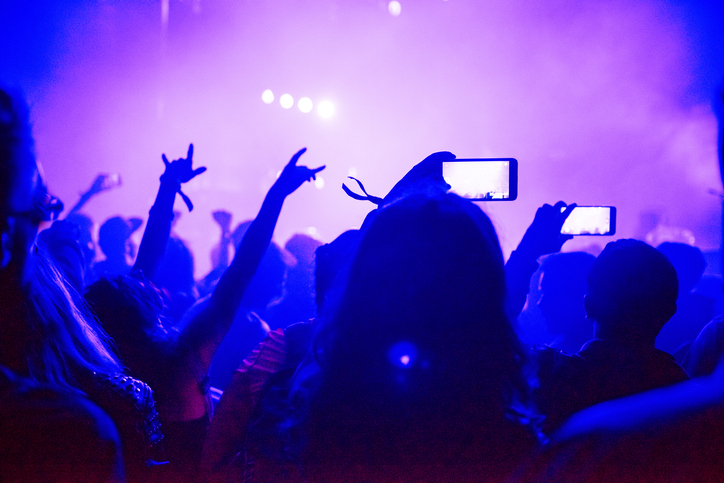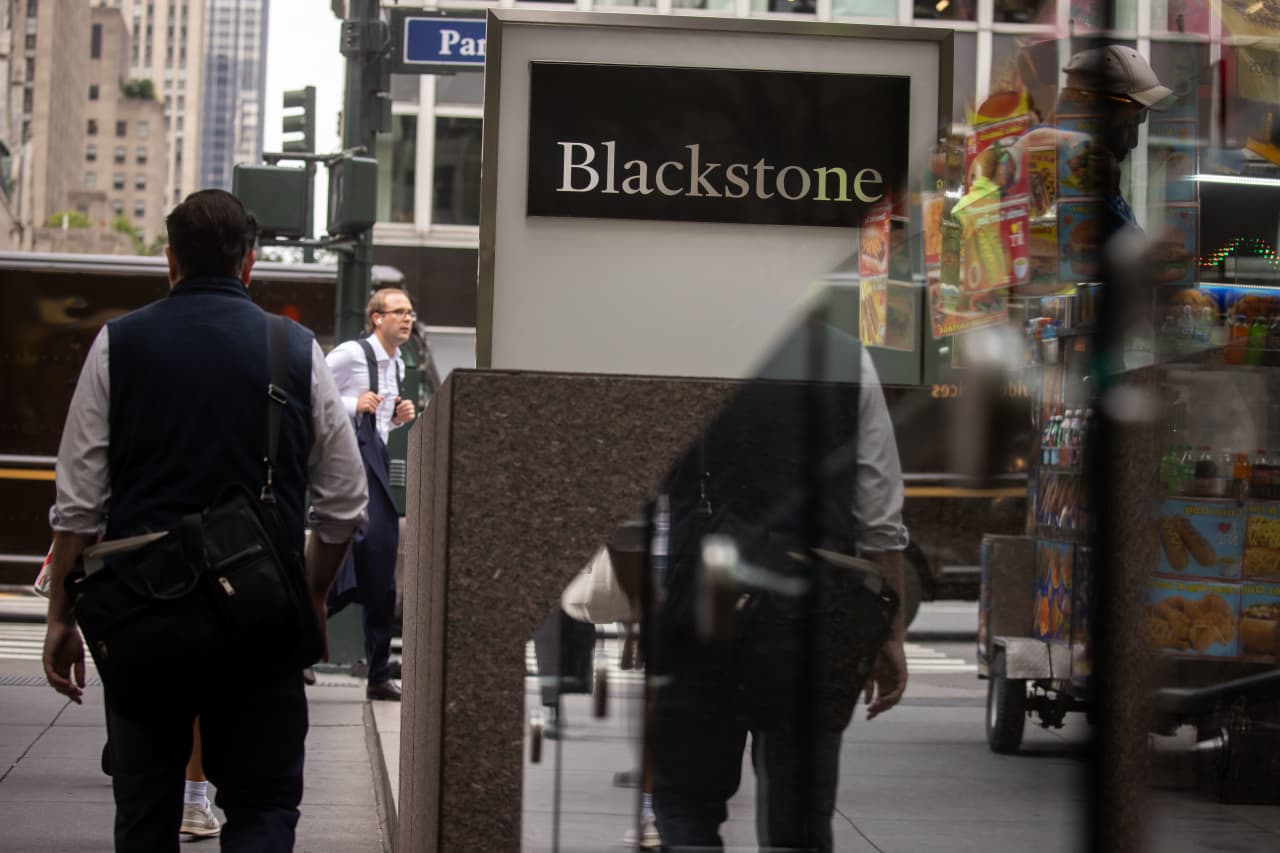Apple’s Priciest iPhones Take Centre Stage as Industry Smartphone Sales Decline
Apple Inc.’s most expensive smartphones will take focus Wednesday as the company unveils the iPhone 14 lineup amid a global slowdown for all but the priciest of gadgets.
The company’s Pro models—the 6.1- and 6.7-inch display versions—have helped fuel record sales and profits for the past two years as the tech giant unveiled its first 5G-capable iPhones in late 2020.
Those versions, which have been priced starting at $200 more than the base-level offering, are poised to get some of the most notable upgrades in a cycle that is expected to be more evolutionary than revolutionary for the iPhone.
Apple’s first in-person product event since Covid-19 upended modern life will include reporters at the company’s headquarters in Cupertino, Calif., and be broadcast simultaneously via its website beginning at 1 p.m. in New York.
The question among many investors is how long can demand—which has been at record heights—last for the iPhone during uncertainty around the economy and rising prices.
Apple has remained confident that there is still interest in converting to the latest technology. “Around the world, 5G penetration is still low,” Tim Cook, Apple chief executive, told analysts in July. “And so I think there’s reason to be optimistic.”
So far, Apple has bucked an industrywide decline in smartphone shipments, which slipped almost 9% in the past quarter compared with a year earlier, according to researcher International Data Corp. During the first half, the bright spot in the market was smartphones priced above $900, according to Counterpoint Research.
Since the arrival of the 5G phones in late 2020, U.S. buyers have been shelling out more for their iPhones. Average selling prices of the iPhone rose to $954 in the June quarter compared with $783 in the September quarter in 2019, when the iPhone 11 was introduced, according to estimates by Consumer Intelligence Research Partners’ survey of consumers.
That is because more buyers have been opting for the more expensive Pro models and spending more to add more storage on the device, which allows for more photos and data-heavy videos to be kept on the phone.
The iPhone 13 Pro comes with 128 gigabytes, while an extra $100 bumps that to 250 gigabytes. For an extra $500, buyers can get 1 terabyte. More than 50% of iPhone buyers were upgrading their storage in the 12 months ending in June, according to Consumer Intelligence Research Partners, compared with less than 40% in 2019.
“That phone mix has moved more premium in recent years,” said Josh Lowitz, co-founder of Consumer Intelligence Research Partners. “For me, that was not anticipated.”
Continuing to sell pricier phones could help Apple boost revenue even if the rate of unit sales slows or becomes stagnant in the coming fiscal year. The 5G phones fuelled estimated unit growth of 27% in fiscal 2021, according to FactSet data. Apple doesn’t release unit sales.
This fiscal year, which ends in September, is expected to see iPhone unit sales slow to 2.5% and grow just 0.8% next year, according to analysts. But those analysts, on average, expected iPhone revenue to rise 6.7% to a record $204.9 billion this fiscal year, followed by an expected 2.7% rise in the 2023 fiscal year.
On Wednesday, the biggest changes are planned for the most-expensive Pro versions. Those models are expected to have more-powerful cameras and better video performance and to receive Apple’s new A16 chip, according to people familiar with the plans.
The base models will get an enhanced version of the current A15 processor. The base lineup is also expected to get the larger 6.7-inch display along with the cheaper 6.1-inch version, while the iPhone 14 lineup won’t have the Mini version with the 5.4-inch display this year, people familiar with the plans said.
The Pro phones, which have started at $999 and $1,099, might also see a price increase of $100, while the base models stay the same—making the difference between a base model and a flagship model $300, analysts have predicted.
Pricing is always a complicated endeavour, made even more difficult this year by rising costs for parts and falling buying power among consumers. But people continue to spend on higher-end phones.
Those pricier phones have been made more palatable to buyers, thanks to a war between U.S. cellular carriers fighting to keep market share as they push to transfer as many customers over to new faster 5G connectivity.
Those carriers have been investing heavily in the 5G technology, and they saw the first iPhones capable of using the technology as a potential catalyst for poaching customers, setting off record incentive spending to offer deals to customers to upgrade their phones.
In the final three months of last year, after the iPhone 13 lineup fully launched, U.S. carriers collectively spent a record amount on incentives totalling $5.7 billion and the average customer saw about $300 of benefit, according to consulting firm BayStreet Research LLC.
The carriers are effectively subsidising Apple’s high iPhone prices to get people to buy the Pro models, BayStreet Founder Cliff Maldonado said. He said he expects record incentives again when the latest iPhones arrive.
With iPhone buyers on a little more than three-year cycle of upgrading, iPhone 11 owners will be emerging into a dramatically different market than when carriers spent an estimated $2 billion on incentives during the final three months of 2019.
“The iPhone 11 was a big cycle,” Mr. Maldonado said. “This is the last big chunk of people who don’t have 5G.”
 Copyright 2020, Dow Jones & Company, Inc. All Rights Reserved Worldwide. LEARN MORE
Copyright 2020, Dow Jones & Company, Inc. All Rights Reserved Worldwide. LEARN MORE
This stylish family home combines a classic palette and finishes with a flexible floorplan
Just 55 minutes from Sydney, make this your creative getaway located in the majestic Hawkesbury region.
As Paris makes its final preparations for the Olympic games, its residents are busy with their own—packing their suitcases, confirming their reservations, and getting out of town.
Worried about the hordes of crowds and overall chaos the Olympics could bring, Parisians are fleeing the city in droves and inundating resort cities around the country. Hotels and holiday rentals in some of France’s most popular vacation destinations—from the French Riviera in the south to the beaches of Normandy in the north—say they are expecting massive crowds this year in advance of the Olympics. The games will run from July 26-Aug. 1.
“It’s already a major holiday season for us, and beyond that, we have the Olympics,” says Stéphane Personeni, general manager of the Lily of the Valley hotel in Saint Tropez. “People began booking early this year.”
Personeni’s hotel typically has no issues filling its rooms each summer—by May of each year, the luxury hotel typically finds itself completely booked out for the months of July and August. But this year, the 53-room hotel began filling up for summer reservations in February.
“We told our regular guests that everything—hotels, apartments, villas—are going to be hard to find this summer,” Personeni says. His neighbours around Saint Tropez say they’re similarly booked up.
As of March, the online marketplace Gens de Confiance (“Trusted People”), saw a 50% increase in reservations from Parisians seeking vacation rentals outside the capital during the Olympics.
Already, August is a popular vacation time for the French. With a minimum of five weeks of vacation mandated by law, many decide to take the entire month off, renting out villas in beachside destinations for longer periods.
But beyond the typical August travel, the Olympics are having a real impact, says Bertille Marchal, a spokesperson for Gens de Confiance.
“We’ve seen nearly three times more reservations for the dates of the Olympics than the following two weeks,” Marchal says. “The increase is definitely linked to the Olympic Games.”

Getty Images
According to the site, the most sought-out vacation destinations are Morbihan and Loire-Atlantique, a seaside region in the northwest; le Var, a coastal area within the southeast of France along the Côte d’Azur; and the island of Corsica in the Mediterranean.
Meanwhile, the Olympics haven’t necessarily been a boon to foreign tourism in the country. Many tourists who might have otherwise come to France are avoiding it this year in favour of other European capitals. In Paris, demand for stays at high-end hotels has collapsed, with bookings down 50% in July compared to last year, according to UMIH Prestige, which represents hotels charging at least €800 ($865) a night for rooms.
Earlier this year, high-end restaurants and concierges said the Olympics might even be an opportunity to score a hard-get-seat at the city’s fine dining.
In the Occitanie region in southwest France, the overall number of reservations this summer hasn’t changed much from last year, says Vincent Gare, president of the regional tourism committee there.
“But looking further at the numbers, we do see an increase in the clientele coming from the Paris region,” Gare told Le Figaro, noting that the increase in reservations has fallen directly on the dates of the Olympic games.
Michel Barré, a retiree living in Paris’s Le Marais neighbourhood, is one of those opting for the beach rather than the opening ceremony. In January, he booked a stay in Normandy for two weeks.
“Even though it’s a major European capital, Paris is still a small city—it’s a massive effort to host all of these events,” Barré says. “The Olympics are going to be a mess.”
More than anything, he just wants some calm after an event-filled summer in Paris, which just before the Olympics experienced the drama of a snap election called by Macron.
“It’s been a hectic summer here,” he says.

AFP via Getty Images
Parisians—Barré included—feel that the city, by over-catering to its tourists, is driving out many residents.
Parts of the Seine—usually one of the most popular summertime hangout spots —have been closed off for weeks as the city installs bleachers and Olympics signage. In certain neighbourhoods, residents will need to scan a QR code with police to access their own apartments. And from the Olympics to Sept. 8, Paris is nearly doubling the price of transit tickets from €2.15 to €4 per ride.
The city’s clear willingness to capitalise on its tourists has motivated some residents to do the same. In March, the number of active Airbnb listings in Paris reached an all-time high as hosts rushed to list their apartments. Listings grew 40% from the same time last year, according to the company.
With their regular clients taking off, Parisian restaurants and merchants are complaining that business is down.
“Are there any Parisians left in Paris?” Alaine Fontaine, president of the restaurant industry association, told the radio station Franceinfo on Sunday. “For the last three weeks, there haven’t been any here.”
Still, for all the talk of those leaving, there are plenty who have decided to stick around.
Jay Swanson, an American expat and YouTuber, can’t imagine leaving during the Olympics—he secured his tickets to see ping pong and volleyball last year. He’s also less concerned about the crowds and road closures than others, having just put together a series of videos explaining how to navigate Paris during the games.
“It’s been 100 years since the Games came to Paris; when else will we get a chance to host the world like this?” Swanson says. “So many Parisians are leaving and tourism is down, so not only will it be quiet but the only people left will be here for a party.”
This stylish family home combines a classic palette and finishes with a flexible floorplan
Just 55 minutes from Sydney, make this your creative getaway located in the majestic Hawkesbury region.





















